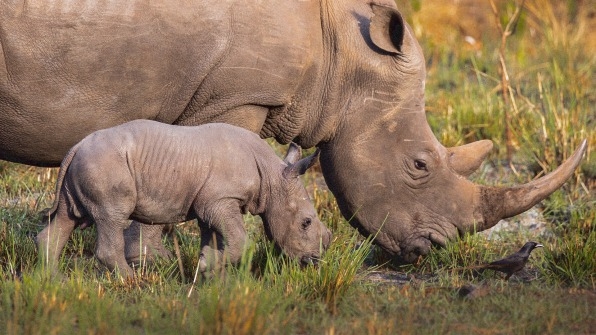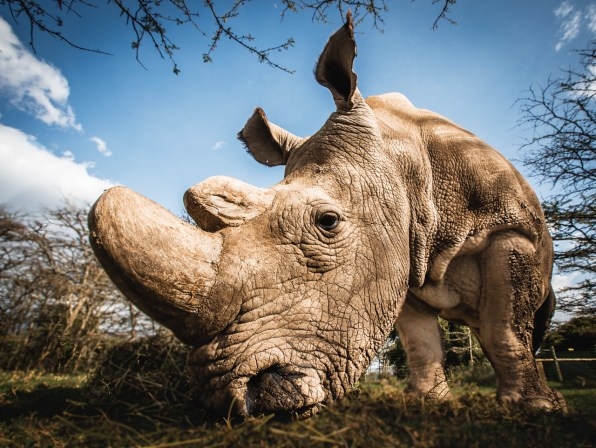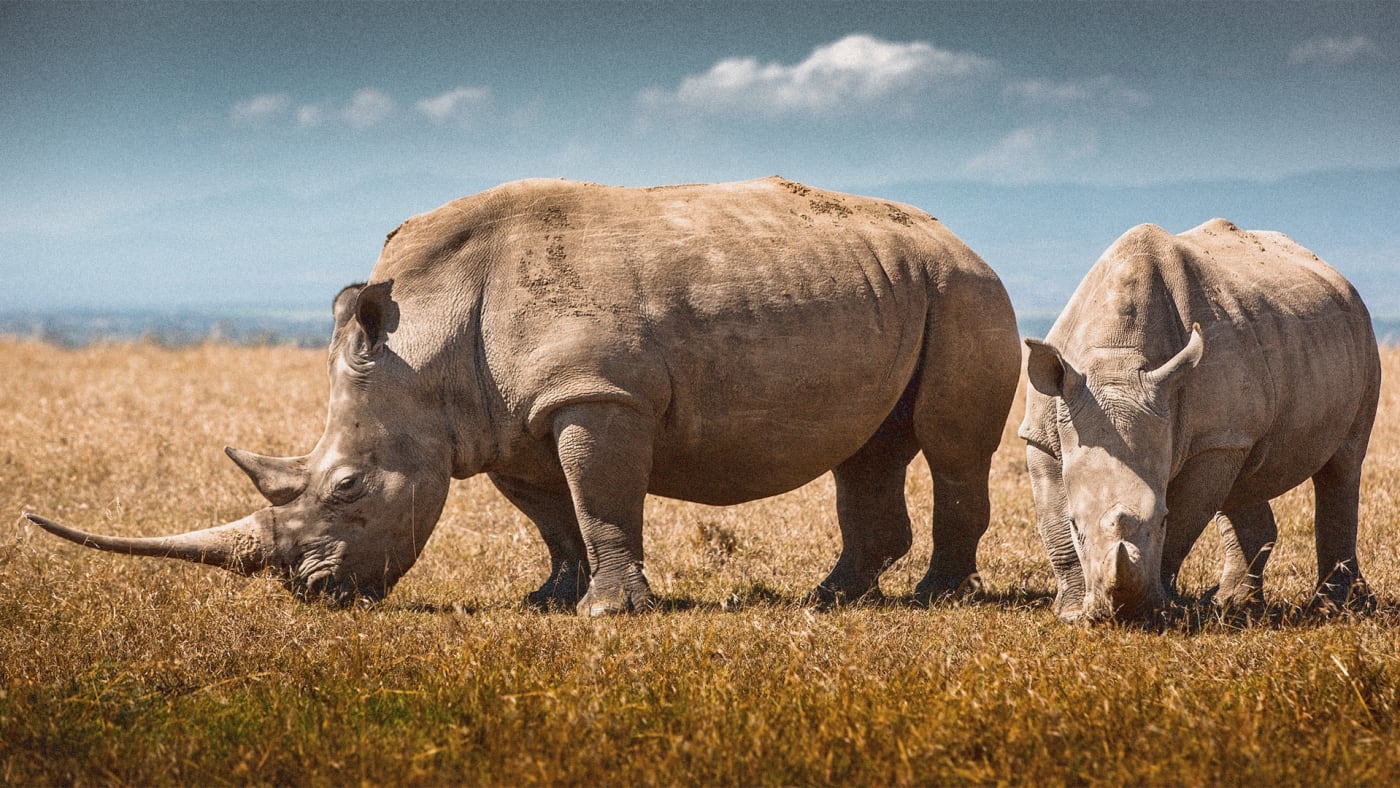Synthetic rhino horns are supposed to disrupt poaching. Will they work?
When 1,028 rhinos were poached in South Africa in 2017–8,000% more than a decade earlier–most of their horns were smuggled into Vietnam and China, where some pieces of horn end up at parties, ground into a powder that hosts give to guests to mix into drinks in the mistaken belief that the horn prevents hangovers. Others are made into traditional medicine or carved into decorative objects and jewelry.
China banned the sale of rhino horn 25 years ago, and poaching in Africa initially declined as Taiwan also stepped up enforcement. But as wealth grew in both China and Vietnam, the illegal horn became a status symbol. By 2011, horn was selling for $80,000 a kilogram, more than twice the price of gold. For the last several years, more than 1,000 rhinos have been poached in South Africa alone; global poaching numbers are unknown, but the total population is now only around 30,000, and 4 out of 5 species are critically endangered.
In Seattle, one startup is working on a controversial potential solution: “biofabricating” synthetic horns that are identical to the real thing, and that could theoretically disrupt the market. “What we’re focusing on is to get the price below a certain level such that people no longer really want that job of [poaching] because the costs outweigh the benefits to them,” says Matthew Markus, cofounder and CEO of the startup, called Pembient. But conservation groups argue that the work is risky–and could possibly lead to even more poaching.

When Pembient launched in 2015, it initially planned to make a powder using synthetic rhino horn DNA that it could sell to people who used rhino horn for its purported medicinal properties. One motivation was technical–it’s easier to make a powder than a solid horn. For a similar reason, many cellular agriculture companies that make “clean meat” without animals are beginning with ground meat rather than trying to make steaks. But as Pembient learned more about the market, it realized that other fake powders, made from other horns such as water buffalo, were already common. The company is now developing full horns that could be sold to carvers, and aims to bring them to market by 2022.
Pembient believes that if it floods the market with horns that are indistinguishable from the real thing, the price will drop so significantly that the crime rings now responsible for poaching will go out of business. But conservation organizations see multiple problems with the strategy.
If the new products look like real rhino horns–down to the level of their DNA–it would become easier for real horns to be smuggled. “If you think about someone at the border of China and Vietnam trying to discern whether this is a legal or an illegal product, these types of biofabricated products create major enforcement concerns,” says Tanya Sanerib, senior attorney and international program legal director for the nonprofit Center for Biological Diversity.
The fake horns could be designed with a signature that could be detected by officials with a DNA test, for example. But the more complex the test, the more likely that some officials may not have the right equipment to do it. And if the difference is easily discernible–or even discernible at all–wealthy customers likely won’t want it.
“Having rhino horn shows your wealth, and it also shows that you’re willing to flout the law,” says Sanerib. “The fact that it’s illegal, the fact that it’s from the wild, the fact that it’s hard to get and you have to have the resources to be able to have it–none of that’s going to be addressed by synthetic rhino horn because it doesn’t have that same allure, doesn’t hold that same status, which is fueling demand in Vietnam right now.”
Pembient wants to create an identical product. But regulators may decide to require some way to identify the products; CITES, an international agreement between governments on the trade of animals, plans to discuss how to regulate a growing number of synthetic replacements for wild animal parts at an upcoming meeting in October. Other companies are also working in the same space. Ceratotech, another startup, is working on growing rhino cells into horns using techniques from regenerative medicine. A professor at Oxford University is working on synthetic ivory, made with microscopic channels that differentiate it from the real thing. Others are working on synthetic tiger bones and synthetic pangolin scales (pangolins, which look a little like anteaters, have scales that are also used in Chinese medicine, and may be the world’s most hunted mammal).
If the synthetic products can be detected, Markus says they will have to be carefully designed to avoid creating two markets, the way that lab-created diamonds are now sold much more cheaply than mined diamonds–and didn’t replace the real thing, despite the fact that mines often exploit workers and diamond sales have been used to fund violence.
“You could have the artificial rhino horn, and then you could have the real thing for people who could afford it–it could even drive that up,” says Bas Huijbregts, who leads the World Wildlife Fund‘s work on wildlife conservation in Africa. “We believe that you can’t really gamble with species whose numbers are so low on the hypothesis that you can flood markets.”

Frederick Chen, a professor of economics at Wake Forest University who has modeled the economics of synthetic rhino horns in a 2017 study, says that it’s true both that increasing supply could drive prices down, and, as conservationists argue, that the synthetic product could also drive more demand for the real thing. Chen proposes another idea: If the fake horns were made to look identical but later proved to be inferior, that could create “quality uncertainty” in the market, an economic theory that was first applied to used cars (people are willing to pay less for used cars because they know there’s a risk they’ll get a lemon).
A fake rhino horn powder could be designed to produce a mild stomach pain, and a fake horn might be designed to eventually break more easily, for example. “If the buyers can’t tell the difference between a real horn and some crappy fake, now their willingness to pay for the product is going to go down,” Chen says. He acknowledges the challenges with the approach–the horns would have to enter the market covertly, and companies would have to be willing to produce an inferior product. “I think there are conditions under which [synthetic horns] would be good for saving rhinos, and I think it’s important to know what those conditions are, and what policies we can implement in order to bring about those conditions,” he says.
Conservation organizations argue that there are better ways to reduce poaching, from increasing enforcement (crime kingpins are rarely, if ever, prosecuted) and stepping up patrols in wildlife parks, to running marketing campaigns to decrease demand. WildAid, one organization, has worked with other NGOs to recruit stars like Yao Ming and Jackie Chan to make PSAs about the fact that rhino horn is simply keratin, like fingernails, and fighting myths about its medicinal value. As the campaigns have run since 2013, they’ve seemed to change attitudes. In surveys in China and Vietnam, the nonprofit found that the number of people who were aware that horns came from poached rhinos quickly increased after the ads ran, while belief in the medicinal value of the horns fell. Since 2014, rhino horn prices have fallen more than 70% to a mean price of $18,000 by last year.
“I strongly believe that this type of demand is cyclical,” says Huijbregts. “We are now in one of those cycles of high demand. Markets can change and will change. With increased efforts of awareness in those markets, there will be a shift.”
At least one organization has tried to directly oppose Pembient’s progress. Earlier this year, The Humane Society of the United States accused the company of violating the Washington Animal Trafficking Act, prompting an official investigation. According to Pembient, the Humane Society also triggered a second investigation into whether the startup was selling unregistered securities when it launched an ICO for tokens that buyers could later exchange for horn. The company spent months dealing with the investigations and was cleared.
Despite challenges, Pembient continues to develop its product, believing that it could help rhinos and provide other value in the market–the horn, for example, could be used in place of plastic to make biodegradable glasses frames and other products, for example. At the upcoming CITES meeting, leaders will grapple with how to regulate the new products. “I think everyone recognizes whether you support these products or not, that we need to see what happens with them, and we need to keep an eye on them,” says Sanerib.
(16)



